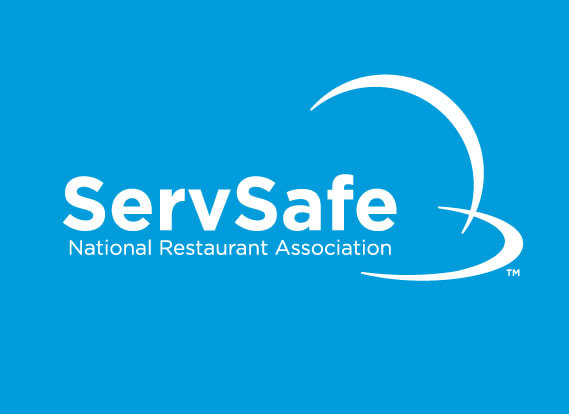The Significance of Holding Valid ServSafe Certifications in the Hospitality Market
The Significance of Holding Valid ServSafe Certifications in the Hospitality Market
Blog Article
Comprehensive Food Handlers Training for Health and Safety And Security
In today's quickly advancing food solution landscape, thorough food handlers training has actually emerged as an essential element for making certain hygiene and security. By instilling important practices associated to hand health, food storage, and hygiene, this training not just alleviates the risk of foodborne health problems yet also enhances compliance with regulatory criteria.
Significance of Food Security Training

Furthermore, food safety training helps to ensure that staff members understand current regulations and guidelines, which are necessary for maintaining functional licenses and preventing costly fines. Routine training sessions also act as a system for strengthening best practices, consequently decreasing the possibility of human mistake, which usually functions as a leading reason of food contamination.
In addition, purchasing food safety training can improve an establishment's track record, as consumers significantly focus on dining experiences that mirror high safety criteria. Such positive measures not just protect consumers however additionally add to the lasting success of food businesses. In recap, thorough food safety and security training is a vital element of food solution procedures, straight impacting both public health and service sustainability.
Key Concepts of Hygiene
Preserving high criteria of hygiene is necessary in any kind of food dealing with environment to stop contamination and guarantee the safety and security of customers. The essential concepts of health incorporate numerous critical techniques that food handlers need to consistently use.
First, hand hygiene is critical; food trainers should clean their hands extensively with soap and water prior to and after dealing with food, as well as after making use of the restroom or touching any possibly infected surface areas. Second of all, tools and surface areas need to be frequently cleaned up and sanitized to get rid of virus. This includes utensils, cutting boards, and counter tops, which must be maintained in a tidy condition.


Correct food storage is also crucial; raw foods need to be saved independently from prepared or ready-to-eat things to stay clear of cross-contamination. servsafe. Additionally, keeping ideal temperature level controls is vital; disposable items ought to be kept at safe temperature levels to hinder bacterial development
Finally, individual health can not be forgotten. Food handlers need to wear clean clothing, use hair restraints, and prevent working when ill. By adhering to these essential concepts of hygiene, food handlers can substantially lower the risk of foodborne illnesses and promote a more secure eating experience for all consumers.
Usual Foodborne Ailments
Although lots of foodborne illnesses can be protected against with proper health and secure food managing practices, they continue to be a considerable public health and wellness concern. Foodborne virus can bring about a selection of illnesses, varying from light gastrointestinal distress to extreme complications and also death.
Common foodborne diseases include salmonellosis, triggered by Salmonella germs, typically linked to undercooked fowl and eggs. One more common illness is listeriosis, connected with raw dairy items and ready-to-eat meats, which can be particularly hazardous for immunocompromised individuals and expectant ladies. Norovirus, often contracted from infected food or surface areas, is understood for its rapid spread and ability to cause episodes in public setups.
Escherichia coli (E. coli) infection, notably related to undercooked ground beef and polluted fruit and vegetables, can lead to extreme abdominal cramps and kidney failure in many cases. Additionally, Clostridium perfringens, often found in large quantities of food that are incorrectly saved, can create food poisoning with signs and symptoms appearing shortly after consumption.
Recognizing these health problems is crucial for food handlers, as awareness can considerably lower the risk of contamination and shield public health. Correct education and learning and training are crucial elements in combating foodborne diseases.
Ideal Practices for Food Handling
Efficient food handling techniques are vital in protecting against the spread of foodborne ailments. Proper hand hygiene is important; food handlers need to wash their hands extensively with soap and water before and after taking care of food, particularly raw meat or poultry. This easy action substantially reduces the threat of cross-contamination
Secondly, maintaining appropriate food storage space temperature levels is important. Perishable things need to be kept at or below 40 ° F(4 ° C) to inhibit microbial development. Additionally, prepared foods need to be kept above 140 ° F(60 ° C) till offered.
Thirdly, ensuring cleanliness of surfaces and tools is essential. Routinely disinfect countertops, reducing boards, and tools, especially after preparing raw foods. Usage different cutting boards for ready-to-eat and raw foods to further decrease contamination threats.
Additionally, when preparing food, it is very important to adhere to the concept of "first in, first out" (FIFO) to handle supply efficiently and lower wasting. Finally, constantly adhere and review to food product official website labels for secure cooking temperatures and managing instructions. By executing these best techniques, food trainers can substantially enhance food safety and shield public health and wellness.
Executing a Safety And Security Culture
Producing a safety and security society within a food dealing with atmosphere is crucial for promoting a commitment to food security among all team member. This society emphasizes the relevance of food safety as a common obligation, urging workers to focus on hygiene techniques continually.
To carry out a safety society, organizations must begin by providing detailed training that attends to food handling protocols, prospective dangers, and the value of personal hygiene. Training sessions need to be interactive and tailored to the specific duties of employee, making certain relevance and interaction.
Moreover, management plays a vital role useful source in establishing this society. Administration should model secure techniques and communicate the importance of food security consistently. Acknowledging and awarding workers who maintain safety and security requirements can even more strengthen these actions.
Additionally, open interaction networks have to be established, enabling team to report safety concerns without anxiety of repercussion. Regular safety and security audits and feedback sessions can assist recognize areas for renovation and enhance liability.
Ultimately, growing a security society not just boosts conformity with food safety laws however also protects public health, promotes employee morale, and adds to the overall success of the food dealing with establishment.
Conclusion
Finally, detailed food trainers training plays an essential function in advertising hygiene and security within food service facilities. By outfitting employees with necessary knowledge concerning food security principles, typical foodborne health problems, and best techniques for taking care of food, such training dramatically decreases health and wellness risks. Furthermore, cultivating a culture of security boosts the facility's reputation and lines up with consumer assumptions for high safety requirements, ultimately adding to public wellness protection and the total success of the food service sector.
In today's rapidly evolving food service landscape, thorough food trainers training has actually emerged as a critical element for ensuring hygiene and safety and security.Food safety training is critical for maintaining high requirements in food handling and prep work, with studies showing that correct training can minimize foodborne health problems by up to 30%. In summary, extensive food safety and security training is an important aspect of food service operations, directly influencing both public health and wellness and organization sustainability.

Report this page